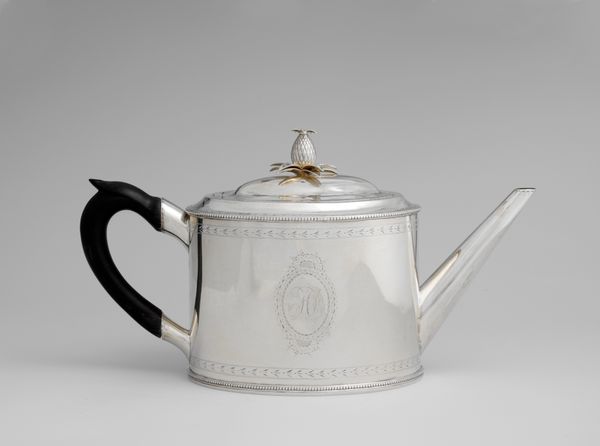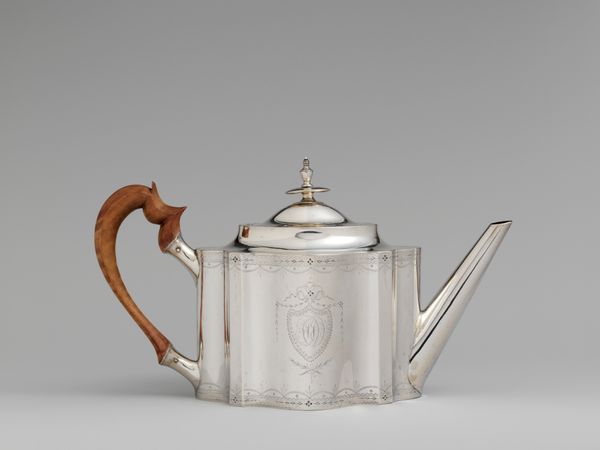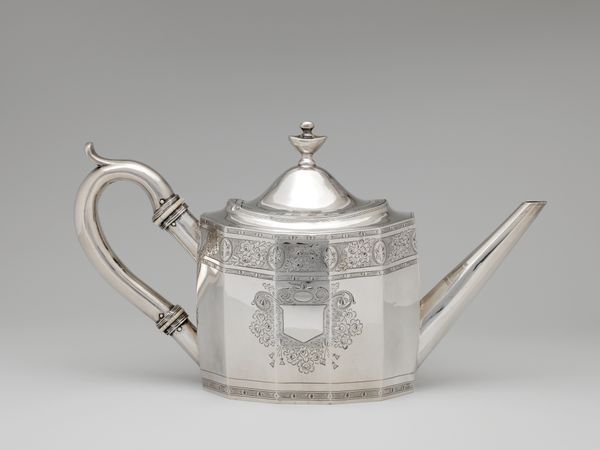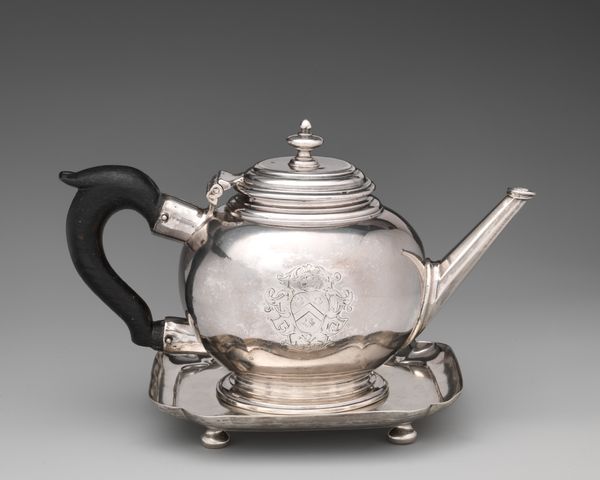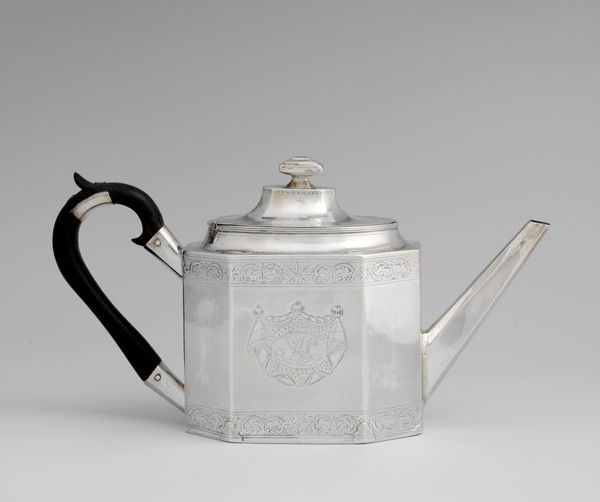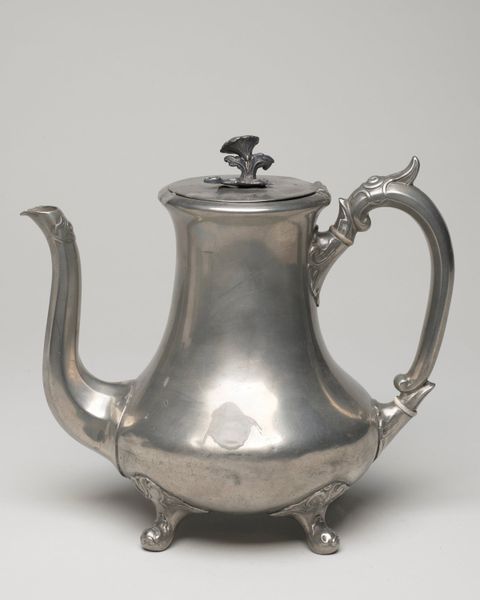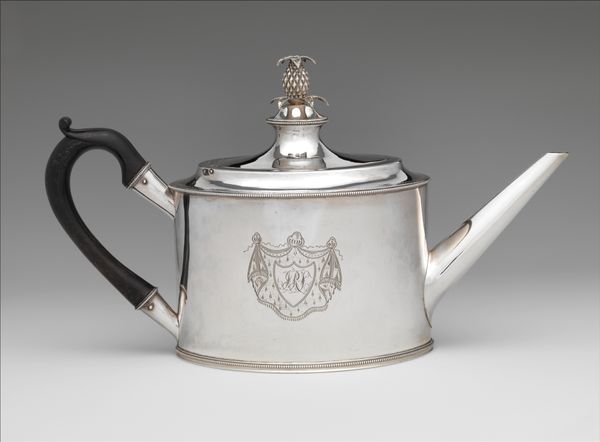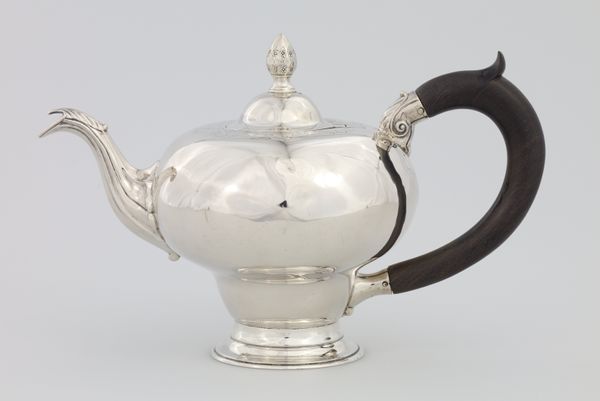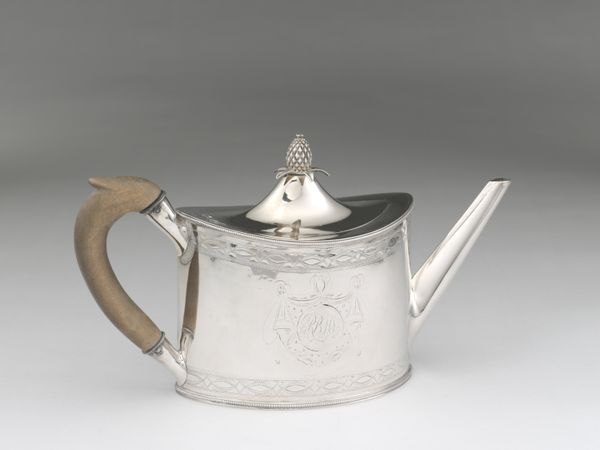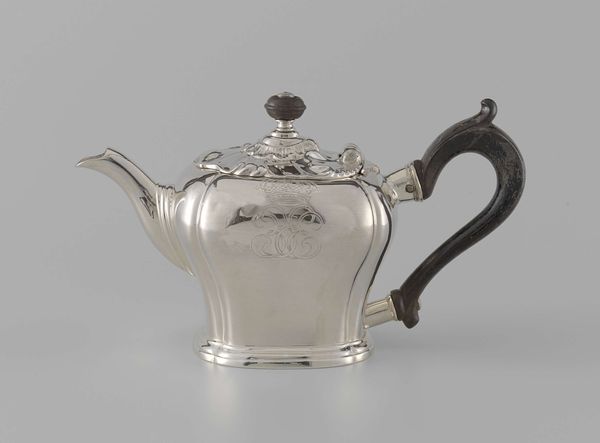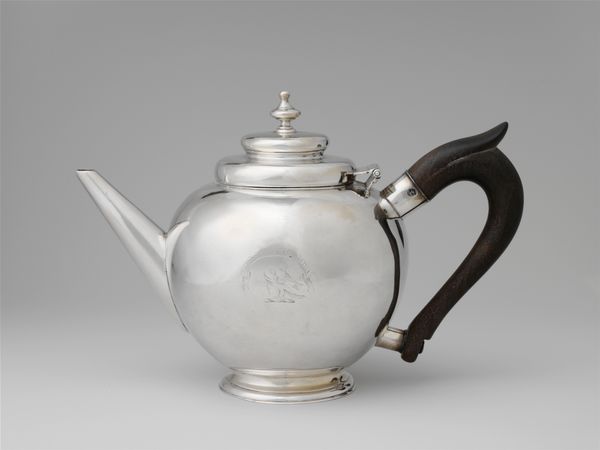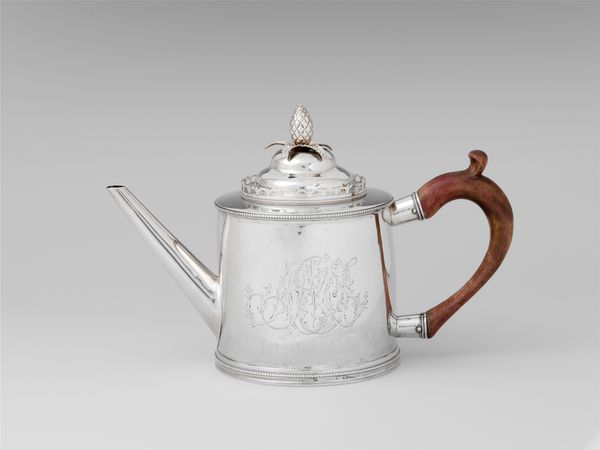
carving, silver, metal, wood
#
neoclacissism
#
carving
#
silver
#
metal
#
wood
#
decorative-art
Dimensions: Overall: 7 9/16 x 12 5/8 in. (19.2 x 32.1 cm); 24 oz. 2 dwt. (750 g) Base: 6 9/16 x 4 7/16 in. (16.7 x 11.3 cm)
Copyright: Public Domain
Curator: Before us, we have a Teapot created between 1790 and 1800, currently residing at the Metropolitan Museum of Art. Crafted by John A. Schanck, it’s a study in Neoclassical style using silver, metal, and wood. Editor: My initial thought? Elegant restraint. The gleaming silver contrasts so strikingly with the dark wood of the handle. I find the spout's precise angle particularly satisfying. Curator: Indeed. Neoclassicism, with its emphasis on order and reason, served as a potent visual language for the burgeoning Republic and upwardly mobile class, with items such as this Teapot displayed as status symbols in the new era. Note the classical urn shape; and observe its clear association with European precedents. Editor: Absolutely, I see those cues, but beyond that I note the symmetry of the object. The engraving seems deliberately understated; nothing disrupts the flow of the reflective surfaces. And in my view, that accentuates the streamlined form, maximizing its impact. Curator: The relatively modest ornamentation points to a societal shift away from overt aristocratic display and towards a more civic-minded aesthetic – the engraving provides a hint of personalized heraldry, perhaps of its original commissioner. These tea services, like this teapot, became symbolic of refinement but also economic power in America. Editor: True. Though beyond its role within socio-economic visual rhetoric, this object creates a compelling visual cadence. The curved handle in matte ebony juxtaposes to the sharp linear lines throughout. The contrast in materiality highlights each for the observer. Curator: Certainly. By displaying such pieces, the burgeoning middle class not only consumed luxury goods, but they were actively signaling their integration into a transatlantic culture. It mirrors a conscious attempt to shape social identity through carefully chosen objects. Editor: All observed via a relatively straightforward, accessible silhouette for us to view centuries later. In scrutinizing this piece so intently, I now see how functional art can convey status and restraint in equal measure. Curator: It serves as a reminder of how art becomes interwoven with evolving cultural values. This piece tells a grand tale despite its intimate scale.
Comments
No comments
Be the first to comment and join the conversation on the ultimate creative platform.
